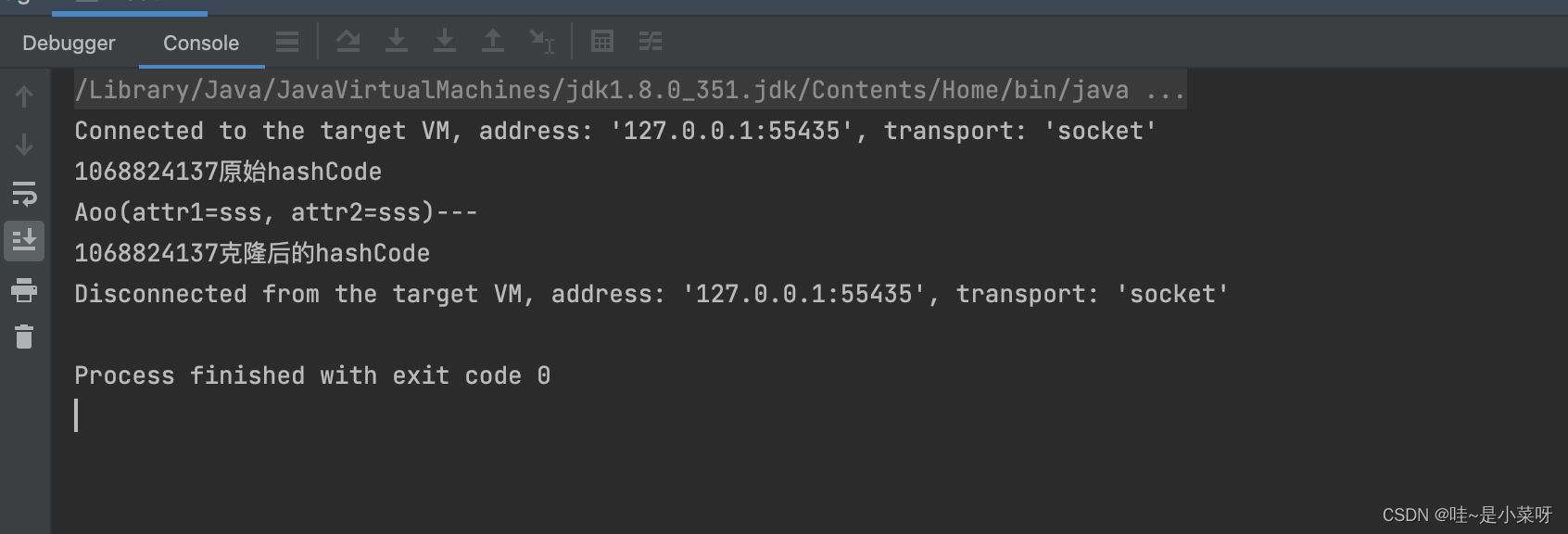一、@With(很少用)
这个注解可以用在类上也可以用在单个的成员变量上,使lombok构建一个’with’ -一个withX方法,它会生成该对象的克隆。
这里做了一个实验,是浅拷贝,不是深拷贝。
@AllArgsConstructor
@ToString
public class Aoo {
@With(AccessLevel.PUBLIC)
private String attr1;
@With(AccessLevel.PUBLIC)
private String attr2;
}
public static void main(String[] args) {
Aoo aoo = new Aoo("sss","sss");
System.out.println(aoo.hashCode()+"原始hashCode");
aoo.withAttr1("aaa");
System.out.println(aoo+"---");
System.out.println(aoo.hashCode()+"克隆后的hashCode");
}

二、 @Accessors(非常好用)
一个用于生成getter、setter和“with”-的设置容器
@Accessors有四个属性,只说两个,有两个不太看得懂。
(一)fluent (布尔型)
如果为true,让set和get变得更加优雅。如果为true则chain默认为true。
这个设置对@With没有影响;他们总是有一个“with”的前缀。
@Accessors(fluent = true)
@Data
@AllArgsConstructor
public class Aoo {
private String attr1;
private String attr2;
}
public static void main(String[] args) {
Aoo aoo = new Aoo("sss","aaa");
// 不需要使用get,直接属性名就可以get到。
aoo.attr1();
aoo.attr2();
// 不需要使用set,直接设置即可
aoo.attr1("attr1").attr2("attr2");
}
(二)chain (布尔型)
set方法是否返回一个值,如果chain为真,则返回这个对象自己,如果chain为假,则返回值为void
@Accessors(chain = true)
@Data
public class Aoo {
private String attr1;
private String attr2;
}
public static void main(String[] args) {
Aoo aoo = new Aoo().setAttr1("sss").setAttr2("sss");
Aoo boo = aoo.setAttr2("aaaa").setAttr2("bbbb");
System.out.println(boo.toString());
}
三、@ExtensionMethod(实验阶段)
向现有类型添加新方法
@ExtensionMethod({
java.util.Arrays.class,java.util.Date.class})
public class Test {
public static void main(String[] args) {
int[] array = new int[]{
10,2,6,1,5};
array.sort();
// 如果没有使用ExtensionMethod,那么应该这样写
// Arrays.sort(array);
System.out.println(array.toString());
}
}